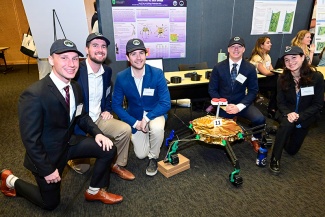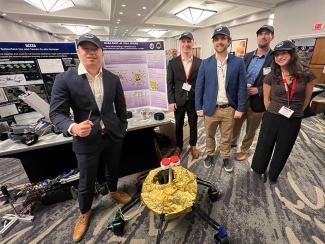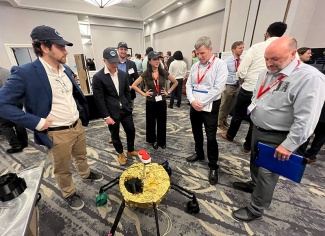One of the most important elements of the rover is the drill, since that is what will allow it to search for liquid water. “Something really unique about our drill is that it has an in-suite science system so all of the analysis is done there in real time within the drill,” Mayer said.
“You generally don’t want a bunch of dust and dirt in the rover,” said Lochner, “so when your drill requires that you bring it inside and then expel it, you have a lot of failure points.” Having all of the science done in the drill itself sidesteps many of those failure points. The team’s goal is to have SPIDER last for at least a year, so minimizing things that might need repairs is a must.
The students were guided by Matthew Barrios, professor of practice in the School of Science and Engineering. He has been the advisor to Tulane’s RASC-AL teams in the past as well, including the last time a Tulane team was a finalist, in 2022.
The team presented their model and plan at the Engineering Capstone Expo, which they said was great for building skills in communication and presenting, which they would later use at the RASC-AL competition. Having a small team that worked so closely over the course of the year has worked to their advantage here.
“We all could talk about all of the parts of the rover,” Kabasakalian said.
Lochner added, “I would trust any one of us to give a good representation and fill a whole 25 minutes by themselves.”
The team packed their bags and model SPIDER and flew to the competition in Cocoa Beach, Florida in June. Although they didn’t win the competition, they had a great experience and learned a lot from the judges and other teams competing.
“Being able to see how the other teams had such wildly different solutions to tackle the same prompt was very fun to see,” said Kabasakalian.
They also received encouraging feedback from the judges, who liked the concept of SPIDER. The team has high hopes for future Tulane teams participating in the RASC-AL competition. “I think it proves that Tulane always has a very good chance to do well in this competition,” said Kabasakalian.

































































